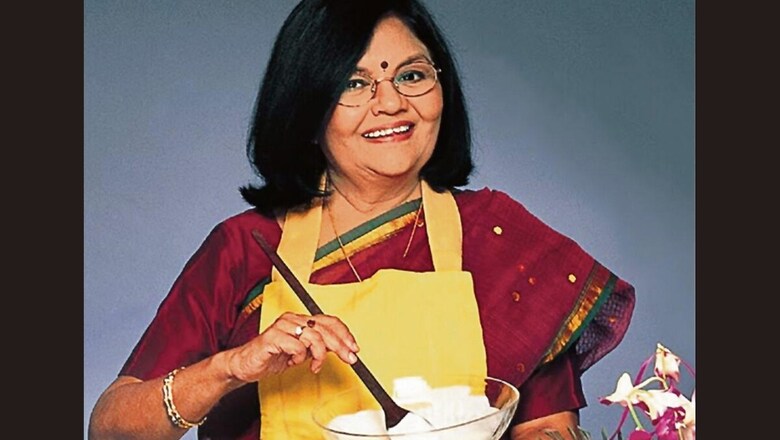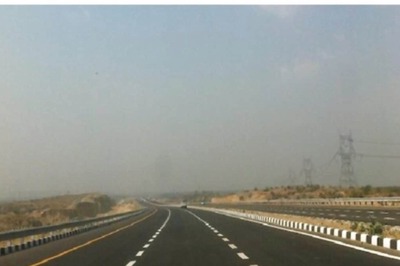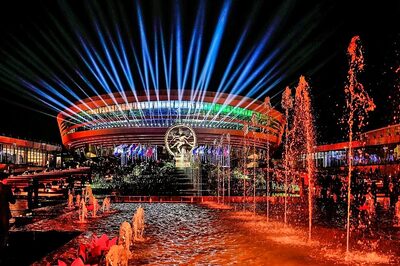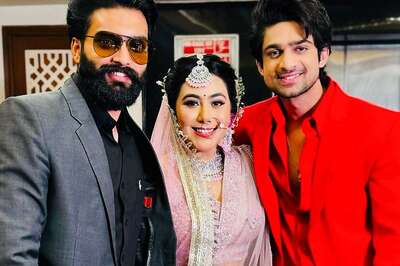
views
In the middle of the last century, the newly-wed or about-to-wed urban women of newly-independent India were all pioneers. Society was trying to get back to a new normal after the bloody schism of Partition scattered families and traditions, couples were trying to find an equilibrium too, what with the responsibilities of looking after parents and children, not to mention coping with food shortages and other crises. Women as homemakers had to keep body and soul together.
It was a time for innovation and courage, fortitude and duty. And much of it centred on the kitchen as that is what led to food on the table, providing nutrition and sustenance for new India. While today that part of the house may be on the way to becoming a gender-neutral space, the fact is that women led the charge from there for decades. And that set the stage for the emergence of our cookery goddesses, one of whom is the subject of the just released biopic, Tarla.
The film, unfortunately, damns with faint praise. For Tarla Dalal, who wrote over 100 books and hosted TV shows, was more than what was portrayed on screen. Indeed, all the Indian women who turned food into careers in the mid 20th century had qualities that went beyond the home-centred issues that inexplicably pre-occupy the makers of Tarla. Just like the scientists, engineers and doctors who were forging a new India, these women were creating a new Indian palate.
While the film skims over the food and cooking aspect of Dalal’s rise to fame — and strangely, sticks to desi khaana examples when the camera does venture into the kitchen — the fact is, women like Dalal set the stage in the 1960s for today’s booming food scene in India. She experimented with foreign flavours from near and far, and Indianised them long before international fast-food chains hit upon the idea of ‘desifying’ their standard burger and pizza offerings for India.
But Dalal was not India’s Julia Child; nor is Madhur Jaffrey. Nor were Mrs Balbir Singh and Thangam Philip, who preceded them. The difference between them and the American kitchen queen is that Child mainly demystified French cooking for her compatriots. India’s women pioneers had far more crucial functions: they discovered, modernised, codified and innovated Indian cuisine, priming the middle class pan-Indian palate, now eagerly wooed by the food industry.
Today there is a consensus on “basic” Indian cuisine, marking a progression from the time of Independence when dishes ruled the roast regionally. Indians now know at least the staples of places and communities other than their own and enjoy those distinctly different flavours. That is due in no small measure to these cookery divas; they were the earliest Indian food influencers who wove diverse culinary traditions into today’s composite Indian table. And it was not easy.
Thangam Philip is not a name with instant recall, except perhaps for people in the catering industry. Yet, like Dalal much later in 2007, she was awarded the Padma Shri way back in 1976. She was the legendary principal of Dadar Catering College and her books are still standard texts for aspiring food professionals. But before that avatar she was part of the female vanguard in the 1950s that drew from nationwide meal favourites to coax Indians into diversifying palates.
The Nehruvian emphasis on importing (and later producing) wheat to feed India’s hungry millions in the first decades after independence is now being called into question as alternatives like millets were not adequately explored as options. But that does not diminish the contribution of Philip and other women who ran Annapurna outlets nationwide, devising and serving carb-less meals — six decades before it became fashionable! — to conserve wheat stocks for the needy.
The idea was clearly before its time and soon floundered, but Philip’s later efforts at the catering college trained a cadre of cookery professionals who formalised a composite cuisine for Indians, at home and abroad. Moreover, the notion of new dishes for a new India took off too. So, recipes were exchanged between home cooks, preserved by many as their mothers’ and grandmothers’ recipe scrapbooks now. But they lacked specifics, leaving much to experience and instinct.
Many regional recipe books had been published earlier in the 20th century — and even in the late 19th — in Indian languages, but they too lacked details that would make it easy for cooks to handle unfamiliar ingredients or techniques. That is why Mrs Balbir Singh’s Indian Cookery published in 1961 — the same year Julia Child’s first culinary baby Mastering the Art of French Cooking was finally born after an eight-year gestation — was so pathbreaking and remains seminal.
Thanks to the qualification in domestic science that she got during her husband’s posting in London, Mrs Balbir Singh’s English language cookbook introduced Western style precision and uniformity when it came to weights, measures and timings. She had already been a name to reckon with in cookery circles in Delhi, teaching nutrition at Lady Irwin College and also conducting classes for about-to-be-wed girls; but her cookbook took her talents to a wider audience.
Even more astoundingly, Mrs Balbir Singh also hosted a cooking show on Doordarshan as far back as 1967. Back then the public broadcaster’s reach was restricted to Delhi and a few “TV clubs”, its timings were just a few hours a week and its purpose was to educate rather than entertain. Including a cooking show along with such national “imperatives” such as the farming show Krishi Darshan indicated the initial importance given to developing a national food culture.
The Green Revolution’ had been launched that same year — 1967 — and Krishi Darshan was evidently meant to nudge farmers in the right direction. Maybe Mrs Balbir Singh was meant to give homemakers the right tools to take that revolution to the next stage — the kitchen. But that impetus soon petered off too and another 15 years would pass before other cooking programmes would feature again on the national broadcaster. By then palates had been primed anyway.
The efforts of countless homemakers swapping recipes across regions and communities to tempt their families’ tastebuds created the staple dishes we now have; Tarla Dalal and Madhur Jaffrey just the most famous among them. Where they went a step further than the other women (like Mrs Balbir Singh and Thangam Philip) was to demystify and codify Indian cookery for increasingly wider audiences eager to experience Indian cuisines — at home and abroad.
There was a bit of Child’s story, however, in Madhur Jaffrey’s motivation to write An Invitation to Indian Cooking in 1973 inasmuch as there was hardly any resource available in the US for those who wanted to explore desi cuisine. Child had sussed the same lacunae about French food in the US. But while Child became the American expert on ‘classic’ French cuisine, Jaffrey made cooking Indian food (then hardly known abroad) possible in western kitchens.
All Jaffrey’s cookbooks and TV shows have also given non-resident Indians something to fall back on — or show off — as Jaffrey imbued desi khaana with panache and deftly substituted hard-to-find-abroad ingredients while maintaining the essence of Indian food. Her talent as an actress also helped disseminate the Indian food story with elan internationally, much like Dalal’s very down-home manner of communication got India to experiment with new dishes.
The French epicure Jean Anthelme Brillat-Savarin wrote in 1825 “Tell me what you eat, and I shall tell you who you are.” Tarla the movie has left Indian appetites whetted but not sated on this matter. The women who have shaped and guided India’s food preferences in the decades after Independence are not India’s “Julia Child” — they are the key to understanding a crucial part of what and who Indians are today. More substantial offerings about them are certainly warranted.
The author is a freelance writer. Views expressed in the above piece are personal and solely that of the author. They do not necessarily reflect News18’s views.




















Comments
0 comment